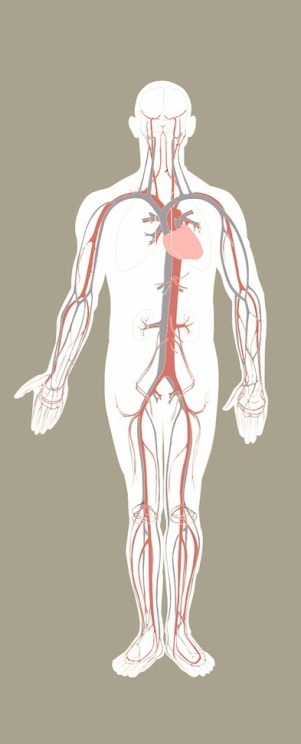Tuulivoimaloiden aiheuttamille terveyshaitoille on olemassa tieteelliset diagnostiset kriteerit (McMurtry & Krogh 2011, 2014). Tutkijoiden mukaan terveyshaitat teollisten tuulivoimaloiden ympäristössä (AHE/IWT) ovat osoittautuneet kiistanalaiseksi keskustelunaiheeksi. ”Tämä voi tuoda haasteita lääkäreille tuulivoimaloiden aiheuttaman altistuksen käsittelyssä. Erityisesti maaseudulla toimivien lääkärien on oltava tietoisia siitä, että ihmiset saattavat valittaa vastaanotolla useista, joskus sekalaisistakin oireista.”
Diagnoosit on jaettu neljään luokkaan:
1. Mahdollinen: mahdollinen diagnoosi otetaan huomioon erotusdiagnoosina.
2. Todennäköinen: valitusten syy liittyy todennäköisesti terveyshaittoihin teollisten tuulivoimaloiden ympäristössä (AHE/IWT).
3. Oletettu: mitään muuta selitystä diagnoosille AHE/IWT ei löydy sairauskertomuksesta, lääkärintarkastuksen tai asianmukaisten tutkimusten jälkeen.
4. Vahvistettu: muut diagnoosit ovat hyvin epätodennäköisiä, ts. vähemmän kuin yksi mahdollisuus 20:sta.
Seuraavassa keskitytään kohtaan 2, todennäköiseen diagnoosiin. Sen tärkeimmät kriteerit ovat seuraavat 4, joista diagnoosiin vaaditaan kaikki:
a) Asunto enintään 10 km:n päässä tuulivoimaloista.
b) Terveydentilan muutos käynnistymisen jälkeen tai varhainen altistuminen tuulivoimalan toiminnalle ja sen toimiessa. Oireet voivat olla piileviä jopa 6 kk.
c) Oireiden poistuminen yli 10 km:n päässä tuulivoimaloista.
d) Oireiden palaaminen palatessa ympäristöön, jossa on tuulivoimaloita.
Toiseksi tärkeimmät kriteerit ovat seuraavat (vähintään 3 esiintyy tai ilmenee tuulivoimalan toiminnan alettua):
a) Elämänlaadun huononeminen.
b) Jatkuvat unihäiriöt, vaikeus päästä uneen ja/tai pysyä keskeytymättömässä unessa.
c) Ärsyyntyneisyys, joka lisää stressitasoa ja/tai henkistä ahdistuneisuutta.
d) Pyrkimys jättää koti väliaikaisesti tai pysyvästi nukkumisen ja/tai palautumisen vuoksi.
Kolmanneksi tärkeimmät kriteerit
Vähintään 3 seuraavista seuraa tai pahenee usein tuulivoimalan toiminnan alettua. Jos toiseksi tärkeimmistä kriteereistä esiintyy oireita (b ja c), muita oireita ei tarvita todennäköisen diagnoosin tekemiseksi. Tutkijoiden kokemukseen perustuen seuraavassa luetellaan yleisimmät oireet:
 Neurologiset:
Neurologiset:
a) tinnitus
b) huimaus
c) tasapaino-ongelmat
d) korvakipu
e) pahoinvointi
f) päänsärky
Kognitiiviset:
a) keskittymisvaikeudet
b) muistiongelmat tai -vaikeudet
Sydänperäiset:
a) kohonnut verenpaine (hypertensio)
b) sydämentykytys
c) laajentunut sydän (kardiomegalia)
Psykologiset:
a) mielialahäiriöt, ts. masennus ja ahdistuneisuus
b) turhautuneisuus
c) ahdistuneisuus
d) viha
Sääntelyhäiriöt:
a) diabeteskontrollin vaikeus
b) kilpirauhashäiriöiden puhkeaminen tai kilpirauhasen vajaa- tai liikatoiminnan kontrolliongelmat
Systeemiset:
a) uupumus
b) uneliaisuus
English:
Diagnostic criteria for adverse health effects of wind turbines
There are diagnostic criteria for adverse health effects of wind turbines in science (McMurtry & Krogh 2011, 2014). According to these scientists the topic of adverse health effects in the environments of industrial wind turbines ”has proven to be controversial and can present physicians with challenges regarding the management of an exposure to IWT. Rural physicians in particular must be aware of the possibility of people presenting to their practices with a variety of sometimes confusing complaints.”
The diagnosis has been divided in four categories:
1. Possible: a potential diagnosis is considered in the differential diagnosis.
2. Probable: cause of complaints is more likely than not related to adverse health effects in the environs of industrial wind turbines (AHE/IWT).
3. Presumed: no other explanation for the diagnosis of AHE/IWT can be found by history, physical and after appropriate investigations.
4. Confirmed: other diagnoses are very unlikely i.e. less than one chance in 20.

In the following, #2, the probable diagnosis, is explained more closely. Its first-order criteria are the following 4, all of them must be present for a diagnosis:
(a) Domicile within up to 10km from IWT
(b) Altered health status following the start-up of, or initial exposure to, and during the operation of IWT. There may be a latent period of up to six months.
(c) Amelioration of symptoms when more than 10km from the environs of IWT.
(d) Recurrence of symptoms upon return to environs of IWT.
The second-order criteria are the following ones (at least 3 of the following occur or worsen after the initiation of operation of IWT):
(a) Compromise of quality of life.
(b) Continuing sleep disturbance, difficulty initiating sleep and/or difficulty with sleep disruption.
(c) Annoyance producing increased levels of stress and/or psychological distress.
(d) Preference to leave residence temporarily or permanently for sleep and/or restoration.
Third-order criteria
Three (3) or more of the following frequently occur or worsen following the initiation of IWT. If the symptoms described in second-order criteria (b and c) are present, no further symptoms or complaints are required for the probable diagnosis. Based on the authors’ experience, the following list provides an indication of the more common symptoms:
Neurological
(a) Tinnitus
(b) Dizziness
(c) Difficulties with balance
(d) Ear ache
(e) Nausea
(f) Headache
Cognitive
(a) Difficulty in concentrating
(b) Problems with recall or difficulties with recall
Cardiovascular
(a) Hypertension
(b) Palpitations
(c) Enlarged heart (cardiomegaly)
Psychological
(a) Mood disorder, i.e. depression and anxiety
(b) Frustration
(c) Feelings of distress
(d) Anger
Regulatory disorders
(a) Difficulty in diabetes control
(b) Onset of thyroid disorders or difficulty controlling hypo- or hyper-thyroidism
Systemic
(a) Fatigue
(b) Sleepiness
– syte/p
McMurtry, RY & Krogh, CME (2014). Diagnostic criteria for adverse health effects in the environs of wind turbines. JRSM Open 2014 5. SAGE. The Royal Society of Medicine. Available: http://journals.sagepub.com/doi/abs/10.1177/2054270414554048
